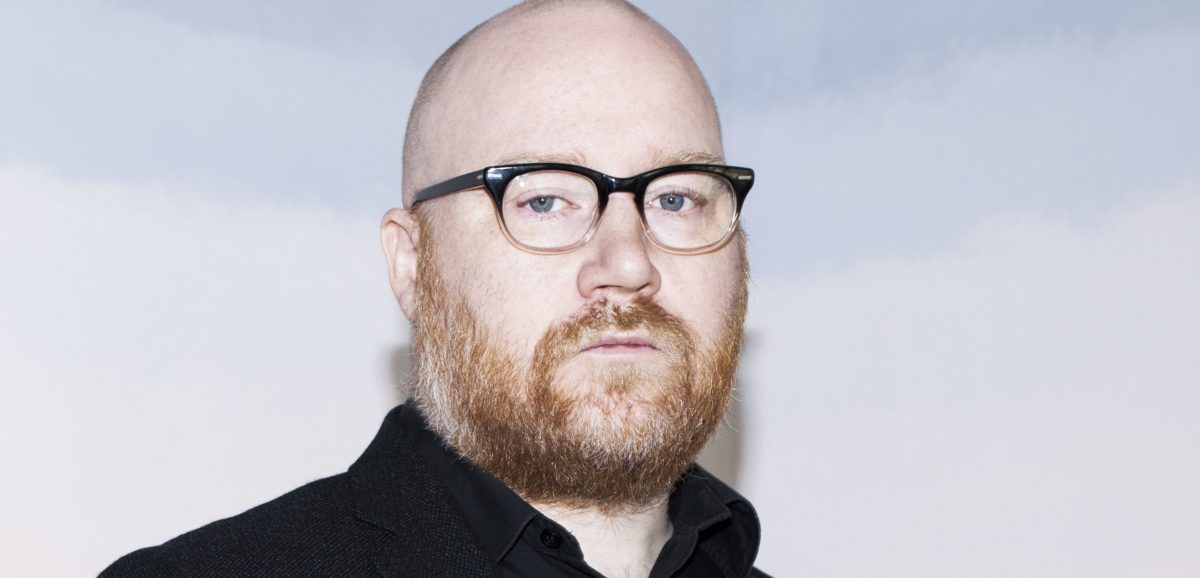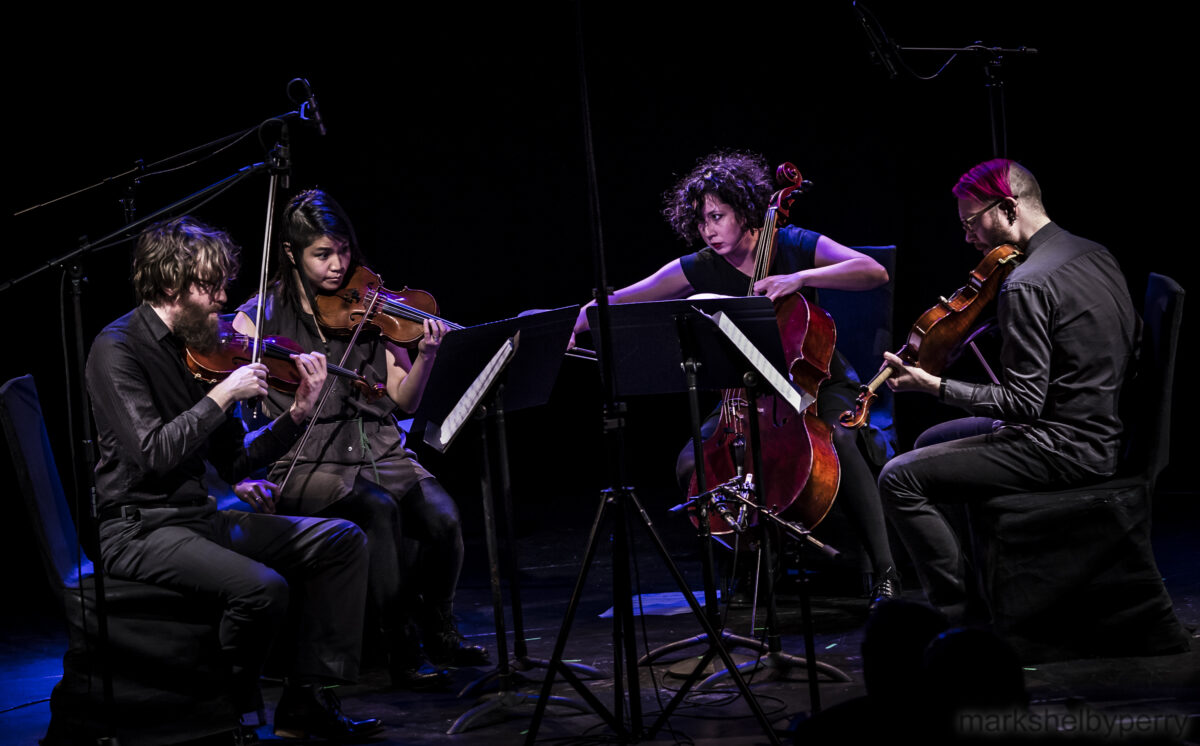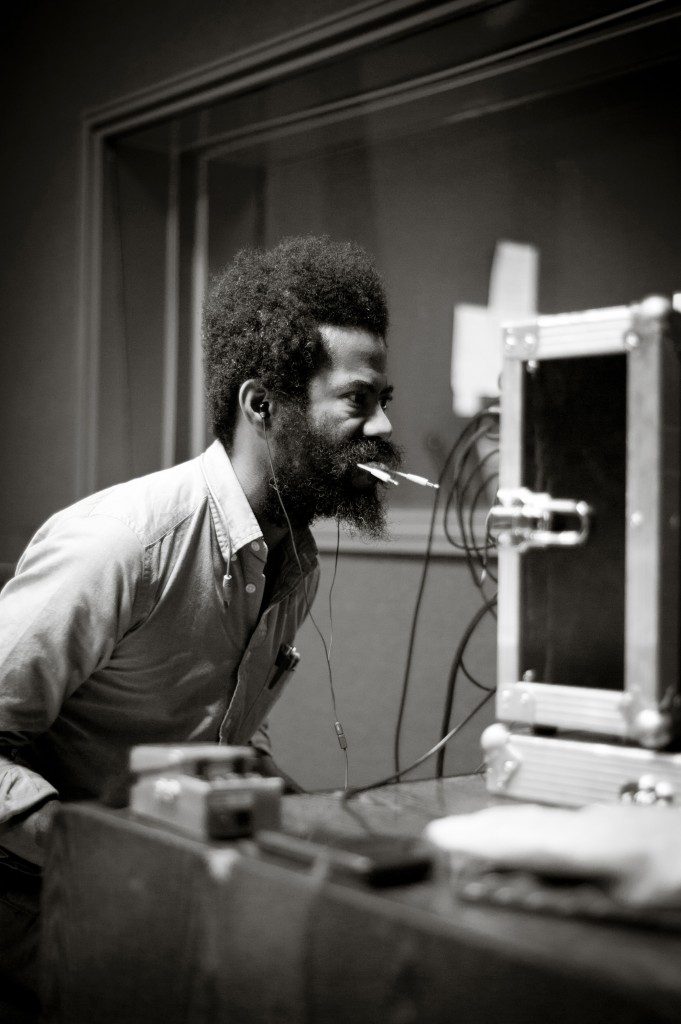LPR Presents
Oct
23
Sun October 23rd, 2016
8:00PM
Co-Cathedral of St. Joseph
Minimum Age: 18+
Doors Open: 7:00PM
Show Time: 8:00PM
Event Ticket: $27.50
Day of Show: $35 (tickets available at the door)
*this event will take place at: Co-Cathedral of St. Joseph, 856 Pacific Street, Brooklyn NY*
*TICKETS AVAILABLE AT THE DOOR*

Ticketing Policy
*Please note: LPR does not print paper tickets. Tickets can only be claimed by checking in at will-call at the Co-Cathedral of St. Joseph once doors have opened on the day of the show. The original ticket buyer must present a valid photo ID at that time. Will call name changes will not be permitted for this performance.*
Jóhann Jóhannsson

Jóhann Jóhannsson official site | Jóhann Jóhannsson on Facebook | Jóhann Jóhannsson on Twitter | Jóhann Jóhannsson on YouTube
Jóhann Jóhannsson is a Berlin-based composer originally from Iceland. His varied and eclectic output includes commissioned works for Bang on A Can, Theatre of Voices and the Icelandic Symphony Orchestra as well as a collaboration with the New York-based experimental filmmaker Bill Morrison on the film The Miners’ Hymns. His debut album “Englabörn” appeared in 2002 and he has since released 5 solo albums on the labels Touch and 4AD. He has composed music for the theatre and contemporary dance and was the founder of the Reykjavik based art collective Kitchen Motors.
Jóhann was awarded a Golden Globe in January 2015 for Best Film Score for The Theory of Everything, directed by James Marsh. His music for the film also earned Jóhannsson an Oscar as well as a BAFTA nomination for best original score. Theory of Everything focuses on the life of famed physicist Stephen Hawking and stars Eddie Redmayne, who won an Oscar for his leading role as Stephen Hawking, and Felicity Jones. Jóhannsson’s other recent film scores include Denis Villeneuve’s Prisoners, Lou Ye’s Blind Massage and So Yong Kim’s For Ellen. He recently finished his second collaboration with Denis Villenueve, for the film Sicario, starring Benicio Del Toro and Emily Blunt, which will premiere and compete for the Palme d’Or at Cannes Festival in May 2015.
After a period spent mostly concentrating on film scores, this year will see the release of several new music projects, some of which have been a long time in the making. Jóhannsson is working on his first studio album in four years since his last release Miner’s Hymns in 2011. A new piece from Jóhannsson, Drone Mass, was also premiered in March 2015 at The Metropolitan Museum of Art in New York in collaboration with 2014 Grammy-Award winning vocal ensemble Roomful of Teeth and American Contemporary Music Ensemble. Last and First Men, a new audiovisual piece, is also in the making and will be performed as work-in-progress at the Kortrijk festival in Belgium in May 2015 with live music performed by the Spectra Ensemble. This piece combines film footage Jóhannsson shot with cinematographer Sturla Brandth Grovlen on various locations in the republics of the former Yugoslavia with new music composed by Jóhannsson. The title is inspired by the science fiction novel of the same name written by Olaf Stapledon which was published in 1930.
“People seem to need labels, but they can be needlessly reductive,” says Icelandic composer and musician Jóhann Jóhannsson. Ever since he was 18, when he started performing in rock bands in Reykjavik, he’s been looking for ways to break out of rigid categories. The music he¹s written for contemporary dance and theater productions, films, pop musicians and his own albums, has always explored the boundary between natural acoustic sounds and electronics, with the goal of exploring and unifying these opposites. “Music is important to me, but it¹s not how I define what I do,” he says.” ”I’m obsessed with the texture of sound and interested in minimal forms, with how to say things as simply as possible, how to distill things into their primal form. The simpler the expression, the easier it is to communicate ideas.”
Jóhannsson started studying piano and trombone when he was 11, but stopped formal musical studies in high school, feeling hampered by the constraints of academic music. After studying literature and languages at university, he spent 10 years playing his music in indie rock bands, concentrating on feedback drenched compositions using layers of guitars to sculpt interesting multi-layered soundscapes. “When I discovered the albums on Eno’s Obscure Records label from the 70’s, my interest moved into creating minimal, ambient structures with classical instruments. I set the guitar aside and started writing music for strings, woodwinds and chamber ensembles, combining acoustic and electronic sounds.” By manipulating the resonances of acoustic instruments with digital processing, Jóhannsson created music that integrated acoustic and electronic sounds into something unique and new. “My ideal is music where the electronic and the acoustic sounds blend seemlessly.”
Reykjavik¹s fertile creative community was small and collaborations between musicians, artists, actors and dancers were common. In 1999, Jóhannsson was a founder member of Kitchen Motors, an art organization/think tank/record label that encouraged interdisciplinary collaborations. “We tried to amplify the opportunities that already existed, pulling together people from the worlds of jazz, classical, electronic music, punk and metal to encourage new hybrids. My own music grew out of those experiments.”
Jóhannsson’s first solo album, Englabörn (Touch, 2002), was a suite based on the music written for the theater piece of the same name, a meeting of classical strings and electronics. “I recorded the strings, then processed them through digital filters to take apart the sounds and reassemble them. I like going to the microscopic core of the music to extract the essence, then use that to build up layers of sound.”
Writing music for plays, dance and theatrical performances led to work on film soundtracks. Jóhannsson scored more than a dozen movies, including The Good Life (Eva Mulvad, DK 2010), Varmints (Marc Craste, UK 2008) and For Ellen (So Yong Kim, US 2012) before his recent work with director Denis Villeneuve on Prisoners and Josh C. Waller on McCanick. His music has also found a home in art house films across the globe, from Lou Ye’s Mystery (CN 2011) to Janos Szazs’ recent prize winning drama, Le Grand Cahier (HU 2013).
Jóhannsson and Villeneuve decided to try something radical for the soundtrack for Prisoners, a gripping drama about kidnapping and revenge. “Denis wanted the music to be a poetic voice that worked in counterpoint to the action of the film,” Jóhannsson says. ³Even though the film is a thriller, the music is lyrical and beautiful, in stark contrast to the horror, ugliness and atrocities that the film depicts.” Jóhannsson composed the score watching an early cut of the film, reacting to the disturbing images on screen. He scored the music for an orchestra withlarge string and woodwind sections and featured the sounds of two little known instruments. The Cristal Baschet is an instrument similar to a glass harmonica, with huge metallic resonators, while the Ondes Martenot is an early electronic instrument similar to a theremin, but with a softer sound. By blending those unfamiliar sounds with string instruments, Jóhannsson created music with a delicate, glassy surface. His tranquil music actually heightens the tension of the film, despite its ambient sound. Jóhannsson says his approach to film music is informed by influences as diverse as Kraftwerk, Steve Reich, Einstürzende Neubauten, Swans, Arvo Part, Ennio Morricone, Morton Feldman, and Bernard Herrmann, but a list of his influences doesn’t do justice to the journey he took to arrive at his singular vision.
Jóhannsson grew up in the suburbs of Reykjavik, the capital of Iceland. His father was the chief maintenance engineer for IBM and one of Iceland¹s first computer programmers. ³In his downtime, at work, he’d compose melodies and sounds on the IBM 1401, a prehistoric computer, Jóhannsson says. “The music he programmed inspired my composition IBM 1401- A User¹s Manual. I incorporated some of the sounds he created when I composed the piece.”
Jóhannsson’s interest in modular synthesizers and ancient electronic instruments found an outlet in his all-analogue side project Apparat Organ Quartet, a band he formed in 1999 with 3 fellow synth and keyboard enthusiasts. After two albums, he left the band in 2012 to concentrate on his solo work.
His varied discography includes Virthulegu Forsetar (Touch 2004), a drone heavy hour-long fanfare for pipe organ and brass; Fordlandia (4AD 2008), a cinematic ode to the city Henry Ford tried to build in the Amazon jungle and Copenhagen Dreams (NTOV 2010), a visual and musical tribute to his current hometown and its people. His soundtrack for Free the Mind, a film that shows how meditation helps people suffering from PTSD and ADHD, is now available on iTunes. The soundtrack album will be available on July DATE and the film will soon be released on DVD.
The Miners’ Hymns, a melancholy tribute to the coal-mining culture in Durham, England, features Morrison¹s heartrending collage of archival footage and Jóhannsson¹s brooding music, full of low sustained notes played by brass instruments that pay homage to the brass bands the coal miners once played in. Jóhannsson performed The Miners¹ Hymns with the American Contemporary Music Ensemble at selected venues in the United States in 2014, bringing in local brass bands to play the score.
Jóhannsson has collaborated with pop artists like Marc Almond; Barry Adamson; Finnish electro band Pan Sonic, The Hafler Trio, the nom de musique of English avant garde composer Andrew M. McKenzie; CAN drummer Jaki Liebezeit; Stephen O’Malley of the dark metal band Sunn O))) and many others. “I like to get out of my own studio and work with other people. Being in a room with someone who has a different approach inspires me. Feeding off of each other¹s musicality always produces interesting results.”
ACME

Since 2004, led by cellist and artistic director Clarice Jensen, the American Contemporary Music Ensemble (ACME) has risen to the highest ranks of American new music through a mix of meticulous musicianship, artistic vision, engaging collaborations, and unwavering standards in every regard. The membership of the amorphous collective includes some of the brightest stars in the field. NPR calls them “contemporary music dynamos,” and Strings reports, “ACME’s absorbing playing pulsed with warm energy. . . Shared glances and inhales triggered transitions in a flow so seamless it seemed learned in a Jedi temple.” ACME was honored by ASCAP during its 10th anniversary season in 2015 for the “virtuosity, passion, and commitment with which it performs and champions American composers.”
The ensemble has performed at leading international venues including Lincoln Center, Carnegie Hall, BAM, The Kennedy Center, Washington Performing Arts, UCLA’s Royce Hall, Stanford Live, Chicago’s Millennium Park, Duke Performances, The Satellite in Los Angeles, STG Presents in Seattle, Melbourne Recital Hall and Sydney Opera House in Australia, and at festivals including the Sacrum Profanum Festival in Poland, All Tomorrow’s Parties in England, Auckland Arts Festival in New Zealand, Summer Nostos Festival in Greece, Boston Calling, and Big Ears in Knoxville, TN. ACME has performed Max Richter’s Sleep, an eight-hour lullaby for a sleeping audience, with him around the world, including at the Great Wall of China; on the piers of Auckland, New Zealand; in Hobart, Tasmania; at the Sydney Opera House; and in LA’s Grand Park, among others.
World premieres given by ACME include Clarice Jensen’s evening-length piece The Exaltation of Inanna for string quartet, guitar, and four singers; Ingram Marshall’s Psalmbook; Jóhann Jóhannsson’s Drone Mass (commissioned by ACME in 2015); Caroline Shaw’s Ritornello; Phil Kline’s Out Cold; William Brittelle’s Loving the Chambered Nautilus; Timo Andres’ Senior and Thrive on Routine; Caleb Burhans’ Jahrzeit; and many more. In 2016 at The Kitchen, ACME premiered Clarice Jensen’s transcription of Julius Eastman’s The Holy Presence of Joan d’Arc for ten cellos, the score of which had been lost since the premiere in 1981. Jensen transcribed a recording of the work to recreate the score.
ACME’s collaborators have included The Richard Alston Dance Company, Wayne McGregor’s Random Dance, Gibney Dance, Satellite Ballet, Meredith Monk, Jóhann Jóhannsson, Max Richter, actress Barbara Sukowa, filmmaker Jim Jarmusch, Blonde Redhead, Grizzly Bear, Low, Matmos, Micachu & The Shapes, Jeff Mangum, A Winged Victory for the Sullen, Roomful of Teeth, Lionheart, and Theo Bleckmann.
In March 2022, ACME released the world premiere recording of Jóhann Jóhannsson’s contemporary oratorio Drone Mass on Deutsche Grammophon, with Theatre of Voices led by Paul Hillier. Gramophone included the album on its list of Best New Classical Recordings. Of the album, Gramophone wrote, “Since Jóhann Jóhannsson’s death in 2018 at the age of only 48, his label DG has done much to promote the Icelandic composer’s posthumous reputation by releasing several soundtrack albums and retrospective collections. One nevertheless senses there exists among the many musical cues and film themes a work of real vitality, power and significance – a jewel in the crown of Jóhannsson’s creative achievements. Drone Mass may well be that work. On one level, this contemporary oratorio for voices, string quartet and electronics – commissioned by the American Contemporary Music Ensemble (ACME) led by cellist Clarice Jensen, who are superb on this recording – is typically Jóhannssonian in its uncanny juxtaposition of the strange with the familiar and its rich interplay of multiple meanings.”
ACME’s discography also includes its first portrait album, Thrive on Routine, on Sono Luminus; Jóhann Jóhannsson’s Orphée and Max Richter’s Sleep, both on Deutsche Grammophon; Fantasias with thereminist Carolina Eyck on Butterscotch Records; Joseph Byrd: NYC 1960-63, the first commercial recording of the music of rediscovered American Fluxus composer Joseph Byrd, on New World Records; William Brittelle’s electro-acoustic chamber work Loving the Chambered Nautilus, and Jefferson Friedman’s On In Love with vocalist Craig Wedren, both on New Amsterdam Records.
Robert A.A. Lowe

Robert A.A. Lowe on Twitter | Robert A.A. Lowe on Instagram
Robert Aiki Aubrey Lowe (b. 1975) is an artist and composer that works with voice in the realm of spontaneous music often under the moniker of Lichens. Most recently, creating patch pieces with modular synthesizer and tonal vocal work has been a focus of live performance and recordings.
The marriage of synthesis and the voice has allowed for a heightened physicality in the way of ecstatic music, both in a live setting and recorded. The sensitivity of analogue modular systems echoes the organic nature of vocal expression which in this case is meant to put forth a trancelike state.
Lowe’s works on paper tend towards human relations to the natural/magical world and the repetition of motifs.Throughout a series of artist residences and commissions in 2014 Robert has focused on performance directly related to hypnagogic states. 2015 has seen further collaboration with french composer Ariel Kalma as well as Jóhann Jóhannsson, and theatre/installation based work with artist Alexandra Wolkowicz, as well as a focus on video synthesis. Through collaboration Robert has worked with Ben Russell, Ben Rivers, Sabrina Ratté, Rose Lazar, Nicolas Becker, Jóhann Jóhannsson, Tarek Atoui, Philippe Parreno, Evan Calder Williams, Ariel Kalma, Lucky Dragons, Alexandra Wolkowicz, Biba Bell, ADULT, Doug Aitken, and Rose Kallal, as well as many others.

